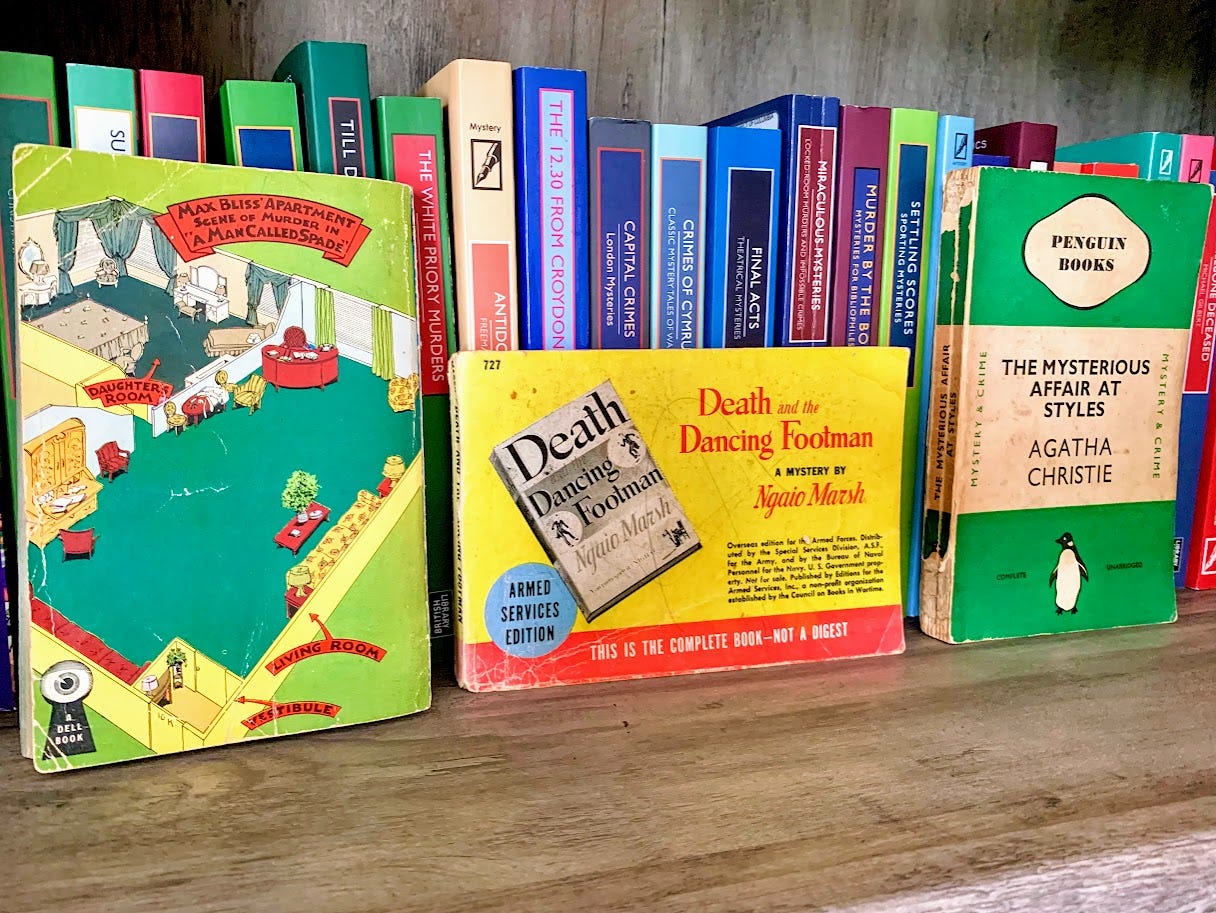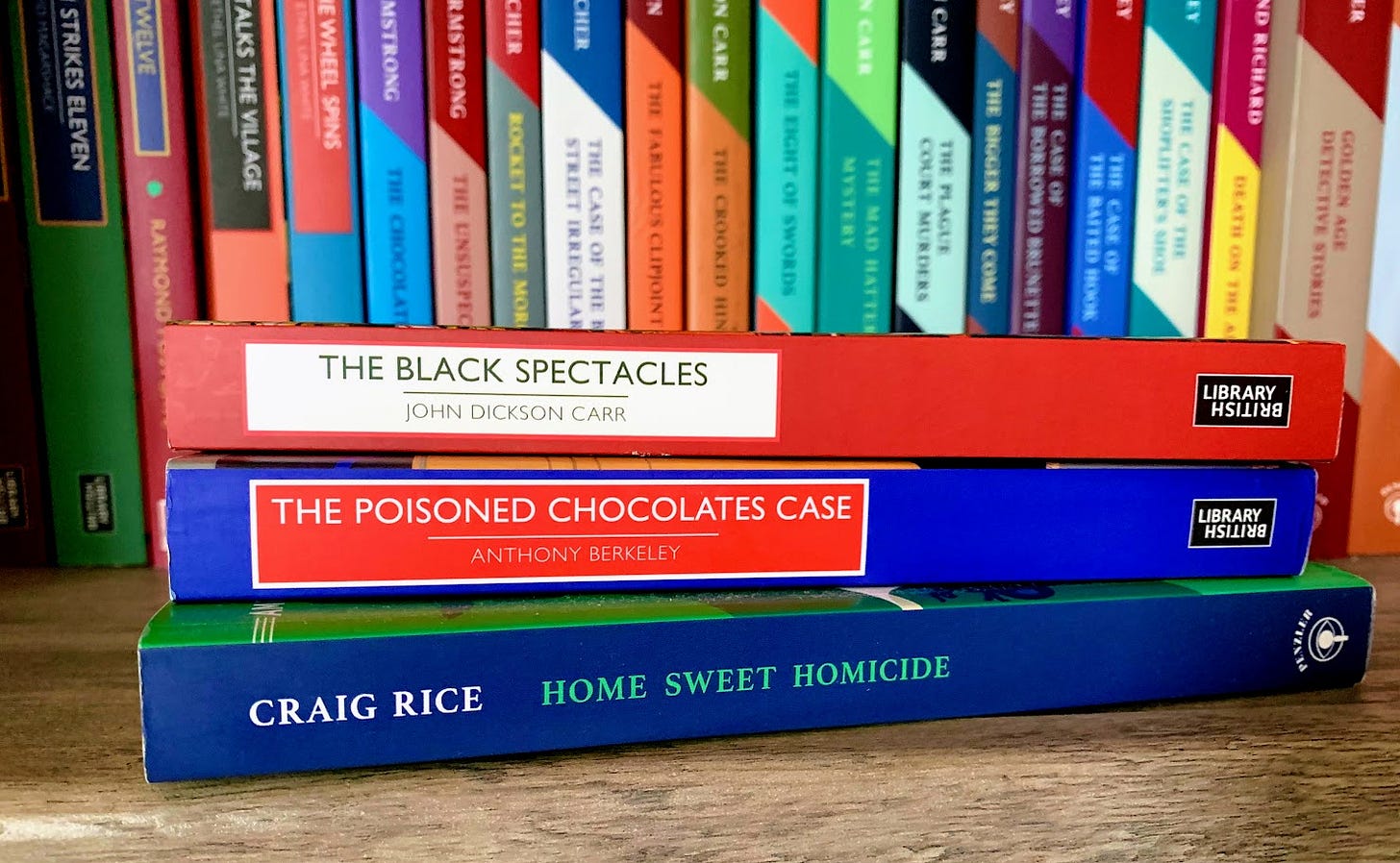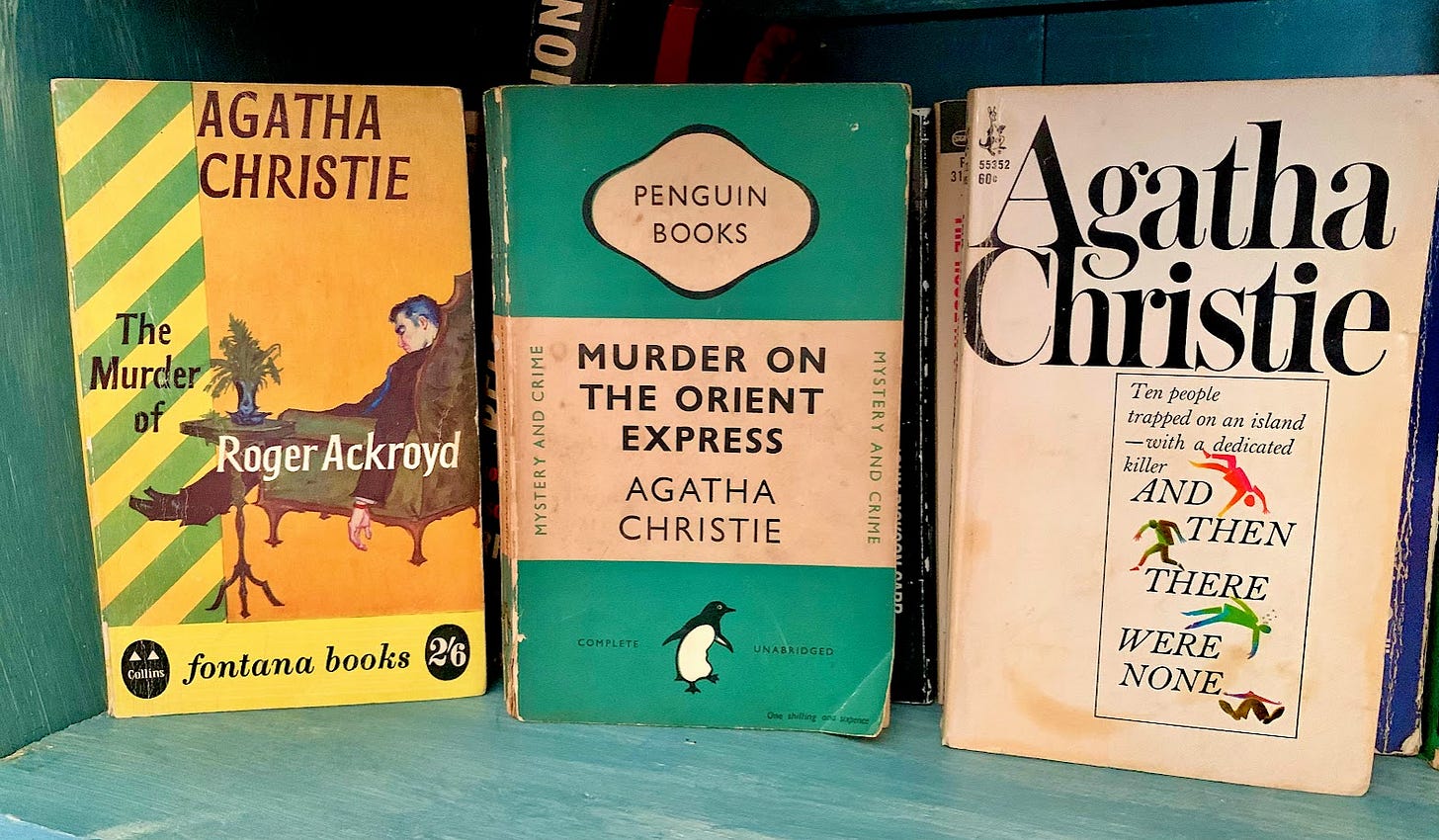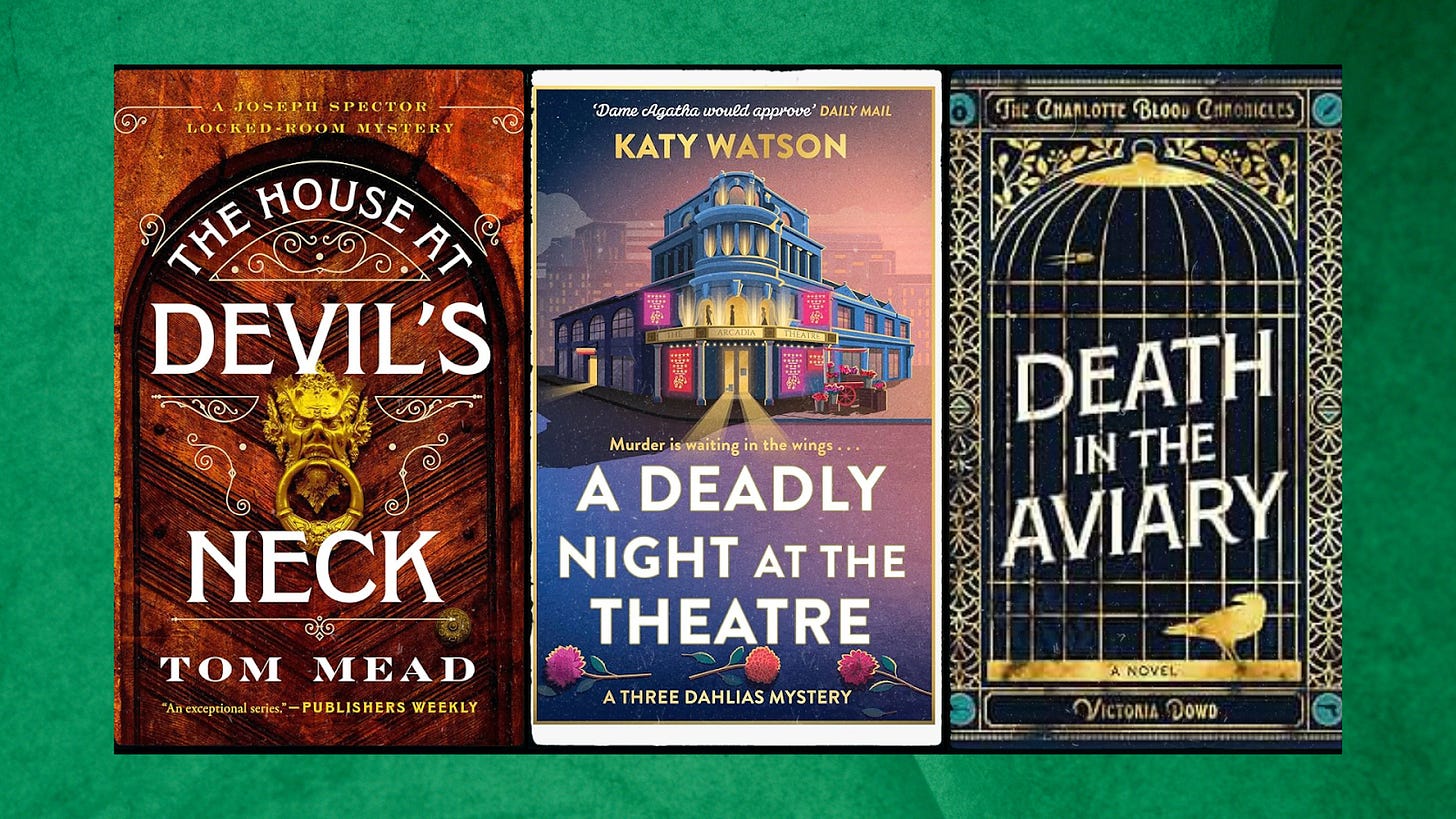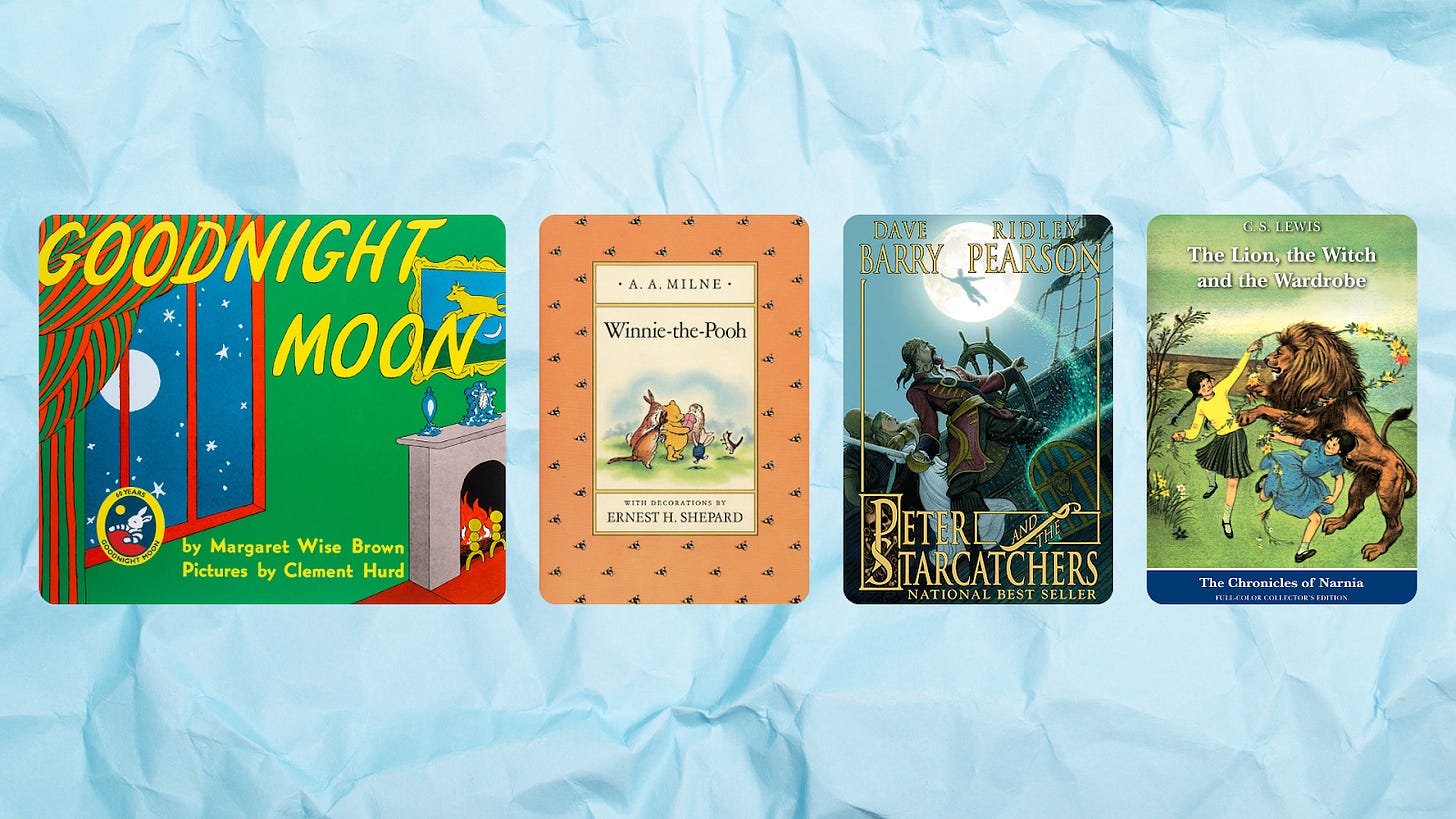Last week, I introduced you to my dad Tom (AKA Bunter and Hastings), who collects and writes about vintage murder mysteries. This week, I’m grilling him for book recommendations, from classic crime to modern mysteries to kid lit.
A: What are some of your favorite books in your collection, either for their design or their history?
T: I have a number of Penguins in my collection that I bought from booksellers in the UK. In 1935, the first Penguins were produced. They were striking for their trip band design and color-coded system for categorizing the books. They were not the first paperbacks to be printed in the UK, but were inexpensive and immensely popular. The design of the original Penguins is iconic.
Some of my other favorites are World War II era Pocket Books. The cover designs are great and on the back cover there is an appeal to send the book to a soldier in uniform. Books played a huge role in the war effort. Thousands of service editions were printed in a format that was easy for a soldier to carry. I am fortunate to have one of these books in my collection.
Some of my other favorites are Dell Mapbacks. Between 1943 and 1951, Dell would print on the back cover a map that pertains to the story. These books are relatively scarce and always a joy to find.
A: Okay, I'm going to throw you a tough question: what three classic mysteries would you recommend to someone who has never tried the genre before, and why?
T: This is tough because there are so many good books to recommend. I am probably going to surprise you by recommending three writers we haven't discussed previously. I am also choosing books that have been recently reprinted and should be readily available.
First up is The Poisoned Chocolates Case by Anthony Berkeley (1929). A murder case involving a poisoned box of chocolates has Scotland Yard stumped. They turn to amateur sleuth and occasional consultant Roger Sheringham (Berkeley's recurring detective) for help. Sheringham presents the case to his fellow amateur detectives and each in turn provides their own solution to the case. In 1930, Berkeley founded the Detection Club which still meets to this day as a gathering of the best practitioners of the mystery novel.
The second recommendation is The Black Spectacles (US title: The Problem of the Green Capsule) by John Dickson Carr (1939). Carr was a prolific writer and master of the locked room mystery. In The Hollow Man (US title: The Three Coffins), Carr's detective Dr. Gideon Fell gives a lecture on the locked room mystery that is considered by many to be the quintessential discussion of this sub-genre.
Carr draws on the same real-life case that inspired Anthony Berkeley's The Poisoned Chocolates Case for The Back Spectacles. The village of Sudbury Cross is being terrorized by a series of poisonings. When Marcus Chesney's niece is accused of the crime, he decides to conduct an experiment to prove her innocence. However, Chesney himself is poisoned in the experiment. Scotland Yard is stumped and calls in Dr. Gideon Fell to assist. It's a very cleverly plotted novel.
My final choice would be Home Sweet Homicide by Craig Rice (1944). Rice made a career out of writing screwball comic mysteries and this is no exception. A single mother (who also happens to be a mystery writer) is trying desperately to finish her new book. Her three children are left to their own devices. One day, they hear a gunshot and when they go to investigate they find their neighbor has been killed. The children undertake to investigate the crime while befriending the lead detective and trying to kindle a romance between him and their mother.
A: Wait, no Agatha Christie in there? Can you give us at least one?
T: Ah, you noticed. Agatha Christie wrote so many great novels that it's sometimes difficult to know where to start. So I'll give you some of my favorites that are also where I would recommend someone who is not acquainted with Christie's work start exploring her books.
T: First, I would start with And Then There Were None. First published in 1939, it tells the story of ten strangers who are invited to an island and are murdered one by one. This book contains one of Christie's most fiendish plots. Don't Google the book if you haven't read it as the AI gives away the solution in the search results.
Another book I strongly recommend is The Murder of Roger Ackroyd. Christie's Belgian detective Hercule Poirot has retired to the country and is called in to help investigate the murder of local businessman Roger Ackroyd. This novel has been often criticized for not playing fair with the reader (if you know, you know) but the clues are there if you know where to look for them.
Finally, I will recommend another Poirot novel, The Murder On The Orient Express. Poirot is trapped with a group of passengers on the Orient Express when it gets stuck in an avalanche. A murder occurs and it is up to Poirot to solve the crime. This is another of Christie's most clever and complex plots. It's easy to see from reading the book why it has been a favorite of filmmakers to adapt.
A: You also keep up with new mystery releases; what upcoming books should we look forward to this summer?
T: Ì am really excited to see new releases from current authors that continue to be inspired by Golden Age Detective Fiction.
Tom Mead is a self-proclaimed fan of John Dickson Carr and has taken up the task of creating locked-room mysteries in the same vein. His recurring detective is Joseph Spector, a retired magician who is occasionally called in by Scotland Yard to consult on investigations. The fourth book in this series, The House At Devil's Neck, will be published on July 15, 2025.
Katy Watson is another author whose work I absolutely love1. Her Three Dahlias mysteries are a must-read for mystery fans. She had created an entire catalog of fictional novels by Lettice Davenport. The detective, Dahlia Lively is something of a cross between Agatha Christie's Miss Marple and M. C. Beaton's Agatha Raisin. Watson has not one but three detectives: three generations of actresses who have all portrayed Dahlia Lively in film and television. Together they solve crimes. The fifth book in this series, A Deadly Night At The Theater, releases on September 9, 2025.
The final book is from a new-to-me author. Victoria Dowd (The Smart Woman's Guide to Murder) was a criminal barrister prior to becoming a bestselling mystery author. Her new book, Death In The Aviary: The Charlotte Blood Chronicles is set in 1929. Charlotte Blood is a young reporter sent to investigate the murder of Lord Ravenswick that occurred the previous New Years Eve. Nine members of the family entered the birdcage shaped lift that had been constructed for the ailing Lord Ravenswick but only eight emerged alive with Lord Ravenswick having been shot to death. Everyone in the family had motive and opportunity yet the police have been unable to solve the crime. It sounds very promising. The book will be published on September 9, 2025.
A: Let’s wrap up by talking about kids’ books for a minute; our family read together constantly when I was growing up, so I have you to blame for my children’s literature fixation. What are some of your favorite children’s books, either from your own childhood or from our family reading?
T: I believe that children today have the advantage of many more choices in books than when I was growing up. But a few still stand out in my memory.
Caps For Sale by Esphyr Slobodinka is a delightful story about a cap salesman who has his entire stock stolen by a monkey and has to figure out a way to recover them all. Curious George by H. A. Rey was a wonderful series of adventures of a mischievous monkey. Mike Mulligan and His Steam Shovel by Virginia Lee Burton is also a delightful book. All of these books feature wonderful artwork that help to enhance the stories.
A: I’m happy to report that all of those are still extremely popular with kids today. They’re timeless, and parents and grandparents have a lot of nostalgia for them.
T: As far as books we read as a family, Goodnight Moon by Margaret Wise Brown Immediately comes to mind. We read that book so many times you memorized the text and could recite it along with me as I read it to you.
We also spent a lot of time with Winnie-The-Pooh by A. A. Milne. We would cycle through those books over and over again.
Then, when you and your sister were a little older, we graduated to chapter books. The two series I remember the most are Peter and the Starcatchers by Dave Barry and Ridley Pearson and The Chronicles of Narnia by C.S. Lewis. I can remember I would come to the end of a chapter with a cliffhanger and you both would beg me to keep going. It was fun seeing you both engaged in whatever book we were reading.
A: Those all bring back some great memories. Our family does still read together as adults, we just tend to pick books with a lot more murder in them now.
Have we inspired you to try a whodunit this summer? Share your favorite literary detectives (or ones on your TBR) below!
Adding a cosign on this recommendation, the entire Three Dahlias series is delightful.






